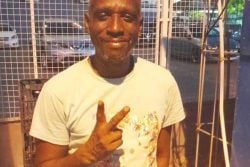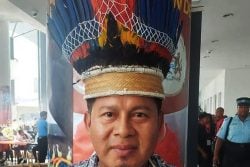David A.B. Murray is Associate Professor of Anthropology and Director of the Graduate Programme in Women’s Studies at York University. This project is sponsored by the UNIFEM Caribbean Office.
By David A.B. Murray
There is much talk about Caribbean men ‘falling behind’, whether in school, the workplace or at home. Some even label this a ‘crisis’, arguing for drastic interventions to help young boys learn appropriate models of masculinity and develop into healthy, productive men who respect themselves and others. There are many causes given for this ‘crisis’: the influence of the African-American ‘thug’ lifestyle; too much attention given to empowering women at the expense of men; young men are spoilt or expect too much without putting in proper effort.
No doubt, the content and character of masculinity is changing throughout the Caribbean. However, the causes and effects of these changes are complex, and related to a variety of social, economic and political factors. Furthermore, these changes do not affect all Caribbean men in the same way. Ethnicity, race, class, age, sexual and religious orientation represent some of the important influences on how one learns what it is to ‘be a man’. Barry Chevannes, researching the socialization of young men in five Caribbean communities in Jamaica, Dominica and Guyana, found that the four Afro-Caribbean communities emphasized independence while the Indo-Guyanese community emphasized collective responsibility. Taking these influences into account, we might want to rethink this ‘crisis’ by first acknowledging that there is more than one model of masculinity in the Caribbean. Some groups of men continue to enjoy privilege and power, while others are facing increasing levels of marginalization due to their socio-economic position, age, sexual orientation, race, and/or ethnic identity.
Odette Parry, from research on male underachievement in high schools in Jamaica, Barbados and St Vincent, offers an example of differing levels of privilege and power in male students from middle class families whose access to resources allows them to opt for a model of masculinity that does not devalue education.
If we recognise variations in masculinity in the Caribbean, influenced by social, cultural and economic factors, which privilege some men and marginalize others, then we must also recognize that change to any model requires simultaneous change in some or all of these influential factors. Mark Padilla, in research on male sex workers in the Dominican Republic, observes how the government’s increasing dependence on tourism as the mainstay of the national economy is based on a large pool of cheap local labour. When men (and women) cannot find work or aren’t paid enough to support themselves and their families, they look for other ways, such as hustling foreign male tourists, to make ends meet. Engaged in work that is against the law and/or disliked by most people in their communities, it is difficult for these men to develop relationships based on respect, honesty and trust. To put it succinctly: severe socio-economic deprivation creates conditions for problematic practices of masculinity.
We must also think carefully about what components of Caribbean masculinities are problematic. How do ‘we’ decide what needs to be fixed or changed? If ‘we’ is a Caribbean government responsible for developing and enforcing social policy that serves the interests of the people, then how do ‘we’ decide which of these models of masculinity is best? There is much talk of the ‘absent father’ and an epidemic of fatherless families producing boys likely to go off track without a proper father figure at home. These arguments presuppose the ‘nuclear family’ model – father, mother, children – just one of many possible ways of defining kin and arranging a household. Across the Caribbean, as in many other parts of the world, boys are raised in a variety of household and kin arrangements with male role models who may or may not be the biological father – uncle, grandfather, mother’s lover, neighbour, teacher – and who help them grow into successful, caring individuals, earning the respect of the community.
Perhaps less debatable are the consequences of certain models of Caribbean masculinity premised upon antagonistic relations with women and aggressive homophobia. There can be little debate over the numerous negative effects of relationships invested with hostility, violence, and distrust, ranging from emotional trauma to health risks, where dishonesty and secrecy can have life-threatening consequences. Yet once again, the challenge lies not just in identifying what is problematic, but why it is and how it came to be ‘valued’ as a feature of masculinity.
Understanding the social, cultural and economic factors that contribute to violence between men and towards women, while simultaneously embracing the diversity of models of masculinity, must be the first step in any programme for change.





